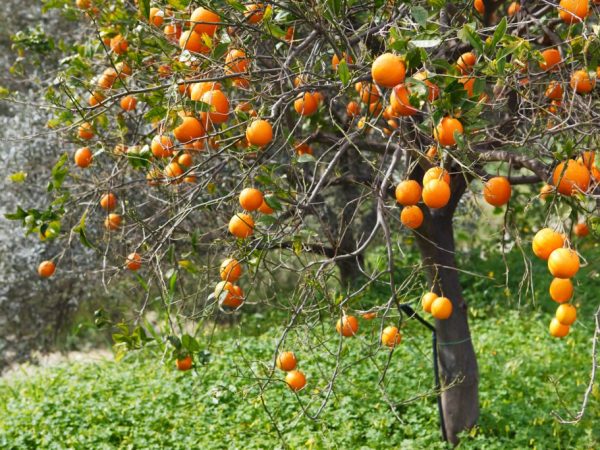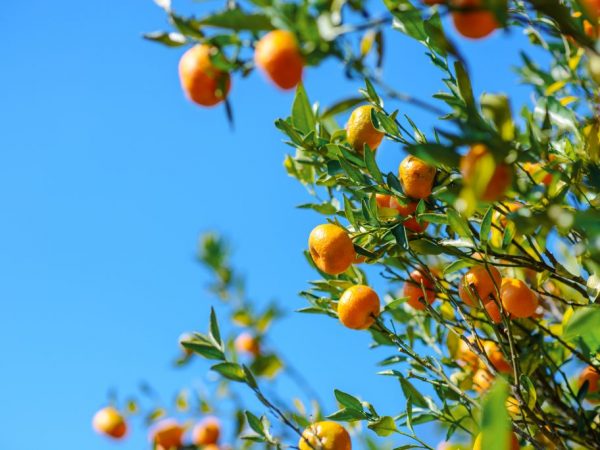Growing Bitter Orange
Bitter orange is an exotic citrus fruit. It began to be cultivated in southeast Asia, today it is bred in India, the Middle East, the Mediterranean and South America. The aromatic oils obtained from this tree have become indispensable in medicine, cosmetology and cooking.

Growing Bitter Orange
Variety characteristic
Another name for bitter orange is orange. Long considered a wild orange, it is a different citrus plant. Probably a hybrid of mandarin and pomelo. This evergreen tree in the wild is unknown. The plant requires warm climatic conditions. It has become popular as a houseplant because of its unpretentiousness and undemanding conditions of detention. It is prized for its unique essential oils obtained from:
- branches;
- leaves;
- fruits;
- flowers;
- peel.
Pomerances begin to bloom early, almost from the cutting, but it is better to give it the opportunity to strengthen. The flowering period in natural conditions is from April to May. Fruits ripen in November - December.
Description of the tree
Under natural conditions, a bitter (wild) orange is a tree that reaches 10m, if grown indoors it does not exceed a height of 1m. They have long, thin, sharp spines. Thanks to its decorative appearance, it will definitely appeal to bonsai lovers.
Leaves, smooth and shiny, form a dense crown. From above, the leaves are green, from below the shade is lighter.
Orange blossom (as these flowers are also called) with their shape, white color and unforgettable aroma have won the right to be a part of the wedding bouquet and wedding dress of the bride. They produce a delicate neroli essential oil with a subtle pleasant smell.
Description of the fetus
The fruit resembles a berry in the form of a flattened ball with a diameter of 6 - 7 cm with a bright orange bumpy skin. The fruits have a citrus aroma. The pulp contains yellow wedge-shaped seeds. Has a specific sour taste with a slight bitterness. In its pure form, it is rarely eaten, but the use of bitter orange extract is striking in its variety:
- unripe fruits can spontaneously fall off, they are used as raw materials for obtaining essential oil for the alcoholic beverage industry;
- ripe fruits have found application in medicine: they have a choleretic, analgesic and antiseptic effect, the use of orange helps to accelerate tissue regeneration, strengthen memory, cure cough;
- juice, which contains bitter orange extract, has good bactericidal properties, will help with angina and laryngitis;
- by cold pressing, oil is obtained from the peel for the perfume industry, and tinctures from the crushed peel increase the appetite;
- used in the food industry for the preparation of marmalade, candied crusts and drinks.
Care

The tree can grow and bear fruit for 70 years
It is possible to cultivate bitter orange in open soil only in tropical and subtropical climates. Under favorable conditions, they can live for more than 70 years and bear fruit annually.
Due to its unpretentiousness, with pleasure this plant is cultivated as a beautiful houseplant. A spectacular, elegant bush with bright fruits that adorn it for up to 10 months a year will always delight. For this result, a number of care requirements must be met:
- Temperature conditions. It blooms and bears fruit at a temperature of 15 - 18 ° C. In winter, you need a bright, cool room with a temperature of 12 ° C. If the plant is not hardened in this way, it can stop fruiting.
- Lighting should be bright and diffused. To prevent direct sunlight from entering, the tree can be placed near an east or west window.
- At low humidity in summer, it is imperative to spray, in winter - as needed.
- Carefully monitor the moisture content of the soil - both excess and lack of moisture adversely affect the viability of the plant. Therefore, in the summer they water abundantly 1-2 times a day, in the winter - 2 times a week, you need to start reducing watering from October. A prerequisite at any time of the year is that the water for irrigation must be warm.
- Monitor the composition of the soil. For young cuttings, humus and sand are added to the ground, and for adults, a little oily clay is also added.
- A young orange tree is to be transplanted every 2 to 3 years.
Of the fertilizers, organic and combined mineral, special fertilizers for citrus fruits are recommended. This should be done after polishing with water. The older the plant and the longer it is in the same pot, the more it needs feeding.
Reproduction of pomegranate is carried out by cuttings when removing from a seed, sown and grown in room conditions.
Diseases and pests
The tristeza virus infects bitter oranges for 4-6 months, the first symptoms are light color of the leaves and delay in the emergence of new shoots. The virus is carried by green citrus and cotton aphids. The method of struggle is the destruction of diseased plants, the use of rootstocks resistant to disease.
When the yellow dragon virus is infected, the tip turns yellow, the ovary falls off, the few fruits are small, the roots rot.
Through vaccinations and aphids, a disease such as leaf-like outgrowths of veins is transmitted. Veins swell on the underside of the leaf, and outgrowths appear. Carriers of the leprosy virus are ticks, spreads with planting and grafting material.
As a preventive measure, carefully check the imported planting and grafting material. In the fight against diseases, thermotherapy is used to produce healthy offspring.
Conclusion
Bitter orange is a relatively unpretentious and undemanding plant in terms of keeping conditions. Its cultivation will be an interesting activity, and the results will certainly delight: decorative appearance, aroma during flowering, wonderful exotic fruits. There are more than a dozen varieties of pomeranians, each with its own unique characteristics. Choose the variety you like and the citrus scent will warm you up in the cold season.


